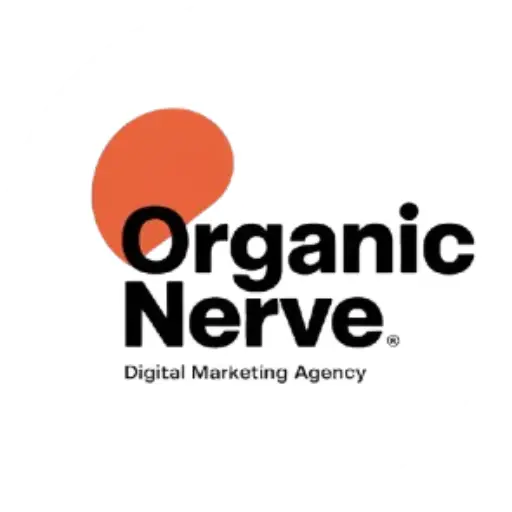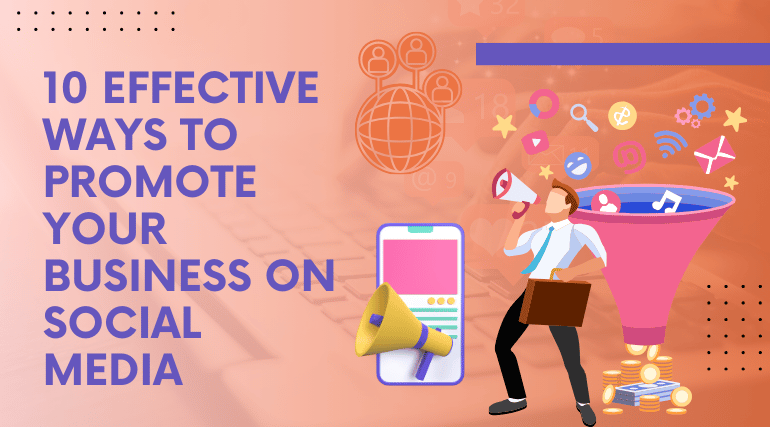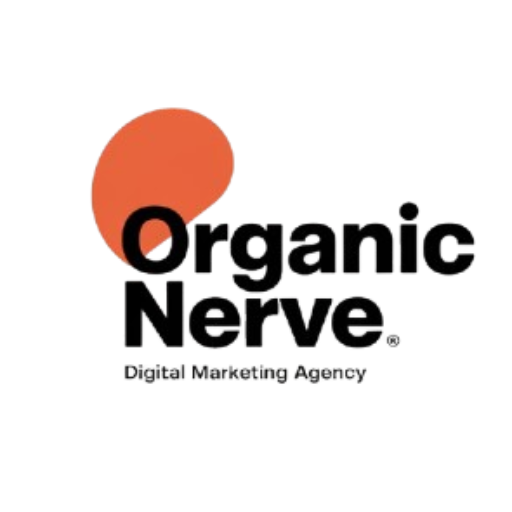In today’s digital age, social media has become an indispensable tool for businesses aiming to reach a broader audience and drive growth. With billions of active users across platforms like Facebook, Instagram, Twitter, LinkedIn, and TikTok, social media offers unparalleled opportunities for businesses to connect with potential customers, build brand awareness, and ultimately increase sales. However, promoting your business on social media requires more than just setting up profiles; it demands a strategic approach to stand out in a crowded digital landscape.
In this blog post, we will explore 10 effective ways to promote your business on social media. From creating optimized profiles and developing a content calendar to leveraging popular trends and collaborating with micro-influencers, each strategy is designed to maximize your social media presence and engagement. Whether you’re a small business owner or managing a large enterprise, these tips will help you harness the full potential of social media marketing, ensuring that your brand not only reaches your target audience but also fosters meaningful interactions that drive long-term success.
10 Effective Ways to Promote Your Business on Social Media Platforms
Social media has evolved from a mere communication tool to a powerful platform for businesses to connect with their audience, build brand awareness, and drive sales. With millions of users engaging daily across various social media platforms, the opportunities for businesses to promote their products and services are virtually limitless. However, navigating the complex world of SMM marketing can be challenging, especially with the constant changes in algorithms, trends, and user behavior. Whether you’re looking to optimize your social media profiles, engage with your audience, or run targeted ad campaigns, these tips will provide you with the insights and tools you need to boost your social media presence. By implementing these strategies, you can ensure that your business stands out in the crowded digital marketplace, reaching the right audience and achieving your marketing goals.
These top 10 methods are designed to be practical and actionable, helping you to take your social media marketing efforts to the next level, no matter the size or stage of your business.
1. Create and Optimize Your Social Media Profiles
The foundation of any successful social media strategy begins with creating and optimizing your business profiles on relevant platforms. Each platform—whether it’s Facebook, Instagram, LinkedIn, or Twitter—caters to different audiences, so it’s crucial to choose those that align with your target market.
Start by ensuring your profile is complete with all necessary details such as a professional logo, a compelling bio, contact information, and links to your website. Consistency in branding across all platforms is essential; it helps customers recognize and trust your brand. Additionally, use high-quality images and clear descriptions to make your profiles more appealing and searchable.
For example, on Instagram, make use of the bio section to include relevant hashtags and a link to a landing page that offers more value to your followers. Similarly, on LinkedIn, a well-crafted company overview and regularly updated posts can enhance your brand’s credibility. Remember, an optimized profile not only attracts followers but also encourages them to engage with your content.
2. Cross-Promote Your Social Media Channels
Cross-promotion is a powerful technique to enhance your social media presence by leveraging your existing audience across different platforms. By promoting your Instagram profile on Facebook, or your LinkedIn page on Twitter, you can direct followers from one platform to another, increasing your overall reach and engagement.
To do this effectively, make sure that your social media profiles are prominently displayed on your website, in email signatures, and even on physical marketing materials like business cards. Encourage followers on one platform to connect with you on others by offering exclusive content or promotions available only on those channels.
For instance, you can create a post on Instagram urging followers to check out your latest LinkedIn article or a tweet encouraging followers to join a Facebook Live session. This strategy not only helps to grow your audience but also ensures that your brand stays top-of-mind across multiple platforms.
3. Develop a Content Calendar
Consistency is key to maintaining an active and engaging social media presence, and developing a content calendar is one of the best ways to achieve this. A content calendar helps you plan, organize, and schedule your posts across different platforms, ensuring that your content remains consistent and relevant.
Start by identifying the key dates, holidays, and events that are relevant to your business and audience. Then, map out your content around these dates, including a mix of promotional posts, educational content, and engaging visuals. Tools like Hootsuite, Buffer, or Google Sheets can be incredibly helpful in creating and managing your content calendar.
Moreover, a well-planned calendar allows you to allocate resources more efficiently, enabling you to create higher-quality content that resonates with your audience. Regularly review and adjust your calendar based on performance analytics to ensure that your strategy remains effective and aligned with your business goals.
Example: Creating an Effective Social Media Content Calendar
4. Leverage Popular Trends and Hashtags
Staying on top of social media trends and utilizing popular hashtags can greatly amplify your reach. By participating in trending conversations, you can tap into larger audiences who are already engaging with those topics. Research trends specific to your industry, and identify hashtags that are not only popular but also relevant to your business.
For example, a bakery might use hashtags like #NationalCookieDay or participate in trends like #ThrowbackThursday by posting images of their first-ever baked goods. This approach keeps your content fresh and connected to broader social media movements, which can increase your visibility and attract new followers.
Additionally, platforms like Twitter and Instagram often highlight trending hashtags and topics, making it easier for you to join conversations that are gaining traction. Regularly engaging with trends relevant to your industry can also position your brand as current and connected.
5. Maintain Consistent Branding Across Platforms
Consistent branding is crucial for creating a recognizable and trustworthy presence on social media. Your brand’s voice, visuals, and messaging should be cohesive across all platforms to ensure that your audience has a seamless experience, regardless of where they encounter your brand.
Start by defining your brand’s visual identity, including color schemes, fonts, and logo usage. Then, apply these elements consistently across your social media profiles, ensuring that your posts, cover photos, and even bio descriptions reflect your brand’s personality and values. This consistency helps build brand recognition and trust with your audience.
For example, a brand that uses a specific color palette and tone on its website should reflect the same aesthetic on Instagram, Facebook, and Twitter. Tools like Canva can help you design social media templates that maintain this consistency.
Example: The Importance of Branding Consistency in Social Media
6. Encourage and Share User-Generated Content (UGC)
User-Generated Content (UGC) is a powerful way to build credibility and trust with your audience. UGC refers to any content—like photos, videos, and reviews—created by your customers that showcase your products or services. Encouraging your customers to share their experiences and tagging your brand can create a wealth of authentic content that you can repost on your channels.
To foster UGC, consider running campaigns that invite customers to share their stories or photos using a specific hashtag. For example, a clothing brand might ask customers to share their favorite outfits with a branded hashtag for a chance to be featured on the brand’s page.
Reposting UGC not only helps in creating a sense of community but also provides you with high-quality content that requires minimal effort. This strategy also gives potential customers a glimpse into real-life experiences with your brand, which can influence their purchasing decisions.
Example: How to Use User-Generated Content in Your Social Media Strategy
7. Engage With Your Audience Regularly
Active engagement is the lifeblood of social media success. Regularly interacting with your followers shows that your brand values its community and is responsive to their needs. This can include replying to comments, answering questions, and even participating in conversations related to your industry.
Being proactive in engagement not only strengthens relationships with existing customers but also attracts new ones. Use features like Instagram Stories’ question stickers, Twitter polls, or Facebook Live sessions to encourage direct interaction with your audience. These tools allow you to gather feedback, answer queries in real time, and create a more dynamic presence on social media.
For instance, a fitness brand might host a live Q&A session on Instagram to discuss workout tips, creating an opportunity for real-time interaction with followers. This not only builds trust but also increases the likelihood of followers engaging with future content.
8. Collaborate With Micro-Influencers

Influencer marketing is no longer limited to celebrities and big names. Micro-influencers, who typically have a smaller but highly engaged following, can be incredibly effective for promoting your business on social media. These influencers often have a strong connection with their audience, making their endorsements more credible and impactful.
To find the right micro-influencers, start by identifying individuals who align with your brand values and have followers who fit your target demographic. Collaborate with them on campaigns that showcase your products or services in a genuine way. This could be through sponsored posts, product reviews, or even takeovers of your social media account.
For example, a local coffee shop might partner with a food blogger who has a few thousand followers in the same city. This collaboration can drive foot traffic to the shop and increase its visibility among potential customers who trust the influencer’s recommendations.
Example: How to Work with Micro-Influencers to Grow Your Business
9. Invest in High-Quality Visuals
Visual content is the cornerstone of social media success. High-quality images and videos are more likely to capture attention, generate engagement, and effectively communicate your brand message. Investing in professional photography, or learning how to take better photos yourself, can significantly enhance your social media presence.
Platforms like Instagram and Pinterest are particularly visual-centric, so it’s essential to post content that is not only visually appealing but also relevant to your audience. Whether it’s product photos, behind-the-scenes shots, or user-generated content, the key is to maintain a high standard of quality.
If your budget allows, consider hiring a professional photographer for key campaigns or events. Alternatively, you can use tools like Canva for creating visually cohesive posts, or apps like VSCO for editing photos to maintain a consistent look across your feed.
10. Run Social Media-Exclusive Promotions

Running promotions or giveaways exclusive to your social media followers is an excellent way to boost engagement and attract new customers. These promotions can take various forms, such as discount codes, flash sales, or contests that encourage followers to participate by liking, sharing, or tagging friends.
By offering something exclusive to your social media audience, you create a sense of urgency and reward loyalty. For instance, a beauty brand might offer a 20% discount code to Instagram followers who comment on a post and tag a friend. This not only increases visibility but also encourages word-of-mouth marketing.
Be sure to track the success of these promotions using analytics tools provided by the social media platform. This will help you understand what resonates with your audience and refine your strategies for future campaigns.
Conclusion
Promoting your business on social media is a multifaceted endeavor that requires strategic planning, consistent effort, and a willingness to adapt to the ever-changing digital landscape. By implementing the 10 strategies discussed in this blog post—ranging from optimizing your social media profiles to leveraging trends and running targeted ad campaigns—you can significantly enhance your brand’s visibility, engagement, and overall success on social media.
Remember, the key to effective social media marketing services lies in understanding your audience, creating valuable content, and maintaining an active presence across platforms. Whether you’re a small business just starting out or an established brand looking to expand your reach, these tactics will help you connect with your audience in meaningful ways, ultimately driving growth and achieving your business objectives.
Start integrating these strategies into your social media plan today, and watch as your online presence transforms into a powerful tool for business promotion and customer engagement.
Frequently Asked Questions
The most effective way to promote your business on social media is by creating and optimizing your social media profiles, engaging with your audience regularly, and leveraging popular trends and hashtags to increase visibility. Consistency in branding and content, along with targeted paid advertising, also plays a significant role.
Small businesses can benefit from micro-influencers by tapping into their engaged and niche audiences. Micro-influencers often have a loyal following that trusts their recommendations, making them an affordable and effective option for promoting products or services to a targeted audience.
A content calendar is crucial for social media marketing as it helps in planning and scheduling posts consistently. It ensures that your content is well-organized, relevant, and timely, which keeps your audience engaged and increases your chances of achieving your marketing goals.
User-generated content (UGC) enhances your brand’s social media presence by showcasing authentic experiences from real customers. UGC builds trust and credibility, encourages community engagement, and provides valuable content that you can share on your channels, all of which contribute to increased brand visibility.
Running social media-exclusive promotions can increase engagement, attract new followers, and reward loyal customers. These promotions create a sense of urgency and exclusivity, driving more traffic to your social media channels and encouraging users to interact with your brand.
You can measure the success of your SMM efforts by tracking key performance indicators (KPIs) such as engagement rates, follower growth, website traffic from social media, conversion rates, and the return on investment (ROI) from paid campaigns. Tools like Google Analytics, Facebook Insights, and Twitter Analytics can help you gather and analyze this data.








